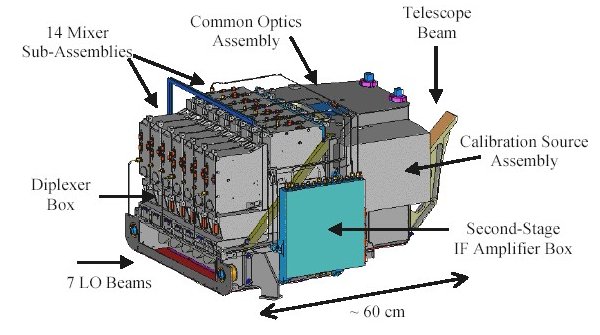|
HIFI consists of five hardware (or sub-systems): the Local Oscillator Unit (LOU), the Instrument Control Unit, the Wide Band and the High Resolution Spectometers, and
the Focal Plane Sub-System. The LOU generates a spectrally pure signal (24-36GHz) and manipulates
it to obtain the desidered frequency for the LO.
The Wide Band and High Resolution Spectometers have a warm check unit controlled by the single Instrument Control Unit interconnected with the satellite control
system.
In the Focal Plane sub-system there is the Focal Plane Unit (FPU, Fig.2) located on the optical bench in the Herschel cryostat.
In the Common Optics Assembly of the FPU, 6 mirrors relay the signal into a diplexer box (Fig.3). Successively the signal is splitted in 7
beams by using 7 sets of 3 mirrors (Fig.4). Each beam is then combined with its corresponding local oscillator, creating two linearly polarized (Horizontal and Vertical) beams per channel. Each of the 14 beams is then combined with the local
oscillator and amplified into a Mixer Sub-Assembly.
|

Fig.2 - HIFI Focal Plane Unit
Click on to see the full size image
|

